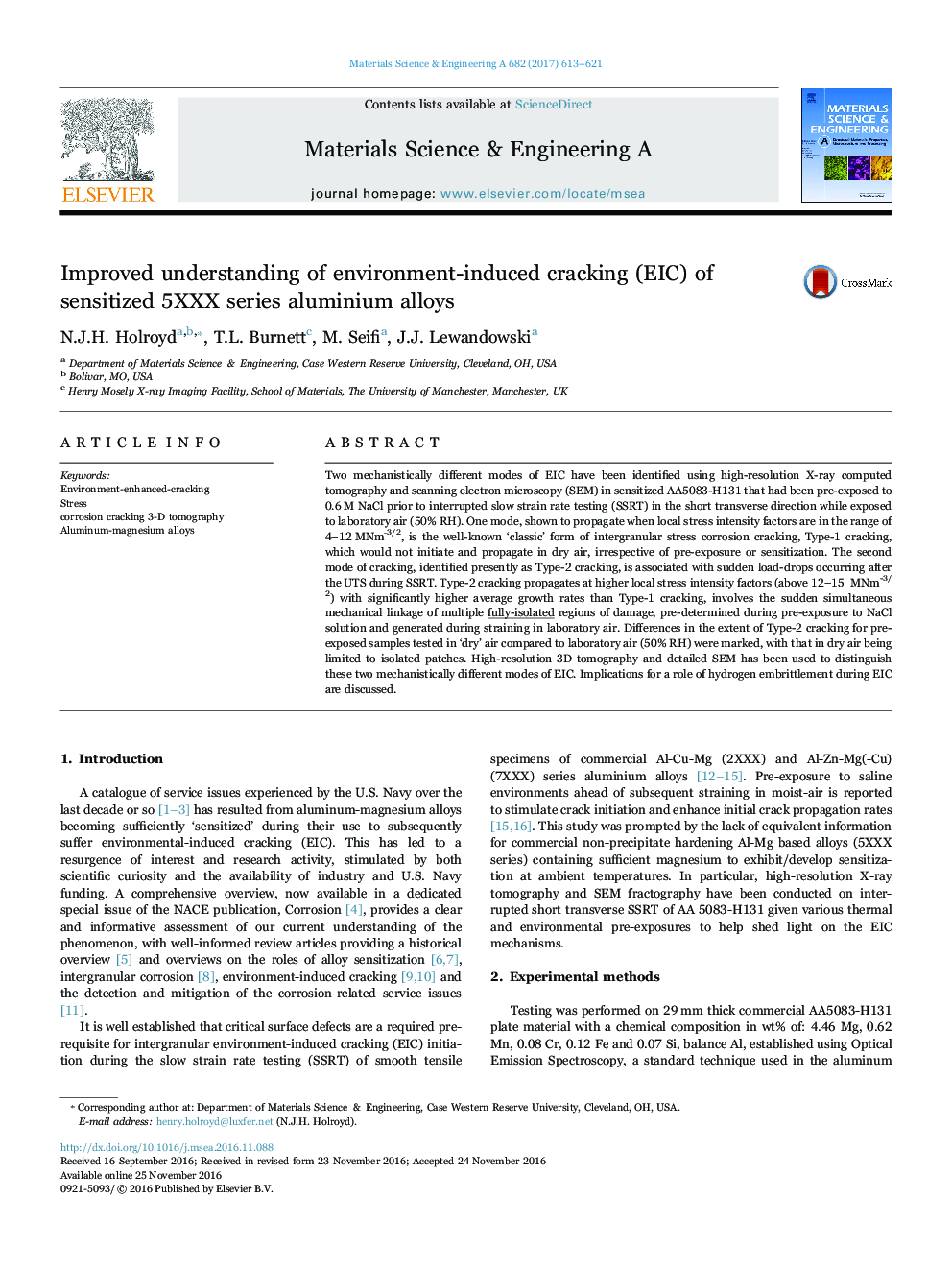| Article ID | Journal | Published Year | Pages | File Type |
|---|---|---|---|---|
| 5456438 | Materials Science and Engineering: A | 2017 | 9 Pages |
Abstract
Two mechanistically different modes of EIC have been identified using high-resolution X-ray computed tomography and scanning electron microscopy (SEM) in sensitized AA5083-H131 that had been pre-exposed to 0.6Â M NaCl prior to interrupted slow strain rate testing (SSRT) in the short transverse direction while exposed to laboratory air (50% RH). One mode, shown to propagate when local stress intensity factors are in the range of 4-12Â MNmâ3/2, is the well-known 'classic' form of intergranular stress corrosion cracking, Type-1 cracking, which would not initiate and propagate in dry air, irrespective of pre-exposure or sensitization. The second mode of cracking, identified presently as Type-2 cracking, is associated with sudden load-drops occurring after the UTS during SSRT. Type-2 cracking propagates at higher local stress intensity factors (above 12-15Â Â MNm-3/2) with significantly higher average growth rates than Type-1 cracking, involves the sudden simultaneous mechanical linkage of multiple fully-isolated regions of damage, pre-determined during pre-exposure to NaCl solution and generated during straining in laboratory air. Differences in the extent of Type-2 cracking for pre-exposed samples tested in 'dry' air compared to laboratory air (50% RH) were marked, with that in dry air being limited to isolated patches. High-resolution 3D tomography and detailed SEM has been used to distinguish these two mechanistically different modes of EIC. Implications for a role of hydrogen embrittlement during EIC are discussed.
Keywords
Related Topics
Physical Sciences and Engineering
Materials Science
Materials Science (General)
Authors
N.J.H. Holroyd, T.L. Burnett, M. Seifi, J.J. Lewandowski,
